
“Getting away from it all” doesn’t necessarily require taking a long trip. As this guest post on the Aldo Leopold Foundation blog describes, a short visit to a favorite spot can work wonders to refresh the spirit.


“Getting away from it all” doesn’t necessarily require taking a long trip. As this guest post on the Aldo Leopold Foundation blog describes, a short visit to a favorite spot can work wonders to refresh the spirit.
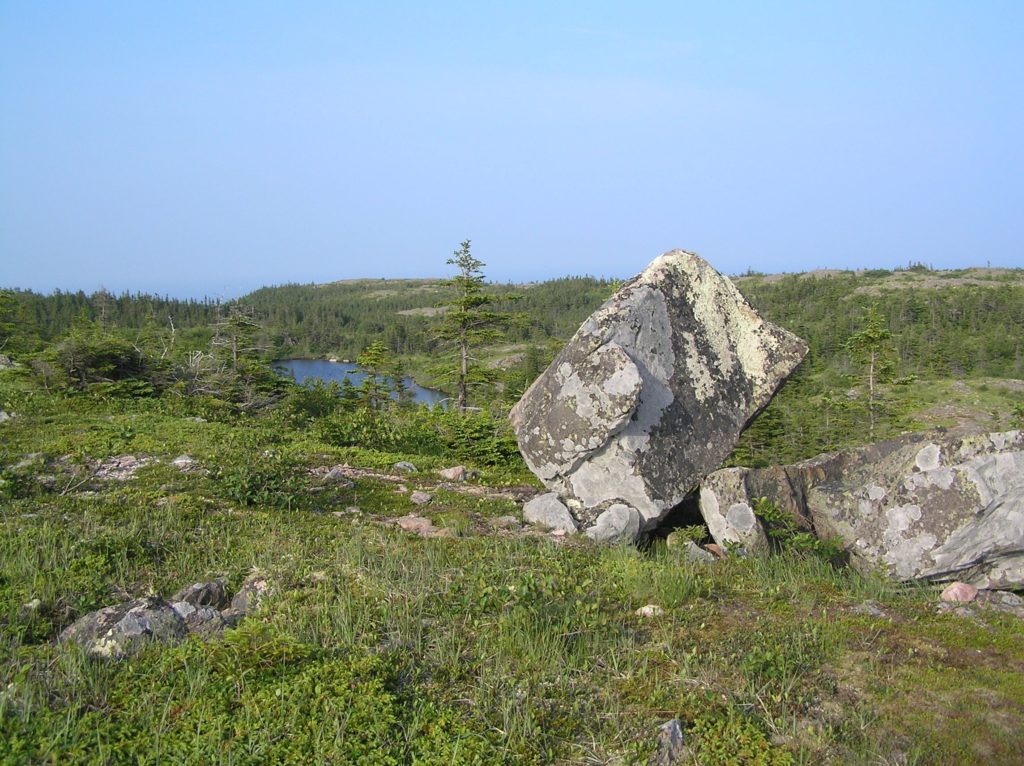
Until this summer, a sheet of paper was taped to the wall above my desk with a list of goals – goals for 2017. I was making some headway on a few of the items, but not very darned much. Finally, out of chagrin, I took the list down when we were expecting company, and now I can’t even find it. I remember one of the goals, though, because I had been laboring at it for months. It said: “Read geology books.” Not “geology book.” I meant to read lots of them. I have quite a few: There’s a Geology 101 text called Earth: An Introduction to Physical Geography. There’s Lawrence Martin’s classic, Physical Geography of Wisconsin, John McPhee’s Annals of the Former World. Geology of Newfoundland, Geology of the St. John’s Area, Roadside Geology of Wisconsin, Roadside Geology of Nebraska, and of Wyoming, and Colorado, New Mexico, Arizona, Maine, Florida….Hawaii. Not to mention a dozen or so (okay, more like two dozen) natural history or geography books with sections on geology. And there’s a brief, lovely book called Reading the Rocks: The Autobiography of the Earth, by Wisconsin geologist Marcia Bjornerud.
Each time I open a new geology book, I think, “This is the one that will make it all become clear.” And somewhere before the book’s midpoint, I realize: Not this one. Not any one. No single book leads directly to that iron core of knowledge that we call “understanding.” I can only glimpse it dimly, as through fog. So I read portions of one book, then another, and circle back to the first, so that spiral-like, I move closer and closer to that core. The course is long, and it often seems that I can’t grasp anything until I have scrutinized it repeatedly from multiple angles.
What is it with rocks? Why do I care? Maybe it’s because my earliest memories are of Middle Cove Beach on Newfoundland’s Avalon Peninsula, where the “grains” of sand are rocks the size of your fist, all worn smooth by the waves, and where raw cliffs of shale and sandstone hold every hard beach in a bleak embrace.
Apparently these rocks still call to my bones. The Avalon Peninsula is the one place on earth where I can stand, walk, or sit very still for any length of time and never feel that I ought to be someplace else. Picture a big wooden salad bowl and a marble. Release the marble and watch it swirl round and round, until the revolutions become smaller and slower, as if they’re relaxing, until at last the marble comes to rest at the bottom of the bowl. I am the marble. Newfoundland’s east coast is the bowl.
For as long as I can remember, I have wanted to be able to comprehend the forces that shaped the Avalon coast – forces that could shift masses of shale so that its sedimentary layers no longer lie flat, as they formed, but are wildly canted, or even vertical. I have wanted to picture – vividly picture – the stages of a glacier’s advance and retreat, see it drop its load of two- and three-foot-round boulders, leaving them strewn across a valley like an interrupted game of giants’ billiards.
For good or ill, I grew up in a home where people might feel mildly curious about such things, but we learned that learning was a more practical pursuit: education was something that should lead to a steady job, and not just provide something vague like an “understanding of the world.” Besides, science studies, along with classical mythology, sent my younger self into strange tunnels of anxiety: I couldn’t make the infinite universe or the universal gods jive with my Lutheran education or with my own hopes for my immortal soul. So as an undergraduate I read books about banking, the effects of compound interest, and the laws of supply and demand, not plate tectonics.
But my curiosity followed me, dog-like, among the drumlins and moraines of southern Wisconsin and finally caught up with me somewhere on a sand prairie along the Mississippi River. I dragged it along to the Platte River, where an amateur student of geology would arguably have fewer layers through which to dig. And then, having learned a little something, I returned to the richly complex geology of Wisconsin.
The Driftless Area only aggravated my malady: While normal people can take in the beauty of a river valley or a stone outcrop, I’m asking myself, “How did it get that way?” I can still see that a place is pretty, but I’m nagged by the sense that there must be a deeper appreciation that comes from grasping its history – that knowledge that’s always just out of reach, within the fog.
And so, in early 2017, I found myself with “read geology books” taped above my computer. And I did begin reading. I started with Reading the Rocks, the book that sounded most accessible. But it felt like I was riding on a train through a foreign country in which you’ve only begun to learn the language. You catch a phrase here and there, the drift of the conversation, perhaps, but you miss the deeper meaning. Nearly two years later, I’m reading Bjornerud’s book a second time, after reading and re-reading sections of other geology books and listening to lectures and scrutinizing landscapes and reading some more. This time, I’m beginning to see a bit more clearly through the fog.
My husband says, “You should have been a scientist.” I respond, “Then I never would have met you.” We are all where we are, at a spot where we can either stand firm, or move forward. Each time I pick up a geology book, it feels like one step. The missing list of goals will surface at some point. By then I hope to have circled closer toward that elusive destination called “understanding.’

In southwest Wisconsin, we’re seldom at a loss for places to hike. Trails, lanes, and lookouts are just about everywhere, but some spots are better known than others. The Mississippi Valley Conservancy, which manages, owns, and protects thousands of acres in the Driftless Area, encourages us to discover some of their stunning but little-known sites through organized hikes, as I explain in the June 2018 issue of Coulee Region Women. Scroll to page 24 to read “Walking a Path to Wellness.”
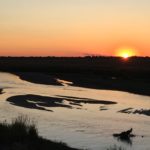 It’s common for naturalists to draw connections between places they visit. Think of John Muir, for example, reflecting in his Thousand Mile Walk to the Gulf, on the plants he found along the way and their similarities to plants he’d left back in Wisconsin. In the May/June issue of Omaha Magazine, I examine similarities between two places I’ve come to know, as well as the ways that sandhill cranes connect people to both places.
It’s common for naturalists to draw connections between places they visit. Think of John Muir, for example, reflecting in his Thousand Mile Walk to the Gulf, on the plants he found along the way and their similarities to plants he’d left back in Wisconsin. In the May/June issue of Omaha Magazine, I examine similarities between two places I’ve come to know, as well as the ways that sandhill cranes connect people to both places.
To read, open the link to the full issue and click to page 66.
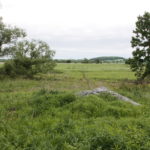 The land along Prairie Lane near the Crawfish River was a cornfield for as long as I could remember. In March, 1999, I joined a volunteer work crew to help begin the process of restoring wetland and prairie habitat at Faville Grove Sanctuary. It was my first experience with habitat restoration and it changed the course of my life. This article in Wisconsin Natural Resources Magazine explains a little bit about why Faville Grove is important to me: “Rooted in the Past, a Sanctuary Grows.”
The land along Prairie Lane near the Crawfish River was a cornfield for as long as I could remember. In March, 1999, I joined a volunteer work crew to help begin the process of restoring wetland and prairie habitat at Faville Grove Sanctuary. It was my first experience with habitat restoration and it changed the course of my life. This article in Wisconsin Natural Resources Magazine explains a little bit about why Faville Grove is important to me: “Rooted in the Past, a Sanctuary Grows.”
If you want to be a naturalist, you should be willing to get outside even when the weather is…less than ideal. Wind, snow, sleet: they’re all part of the experience.
Still. There comes a point each winter when I start to think that the ice, gray skies, and sub-zero temperatures have nothing new to teach me. I have options. I could curl up next to my laptop with a pot of coffee and binge-watch a season of my favorite British TV series. Continue reading
One of the many benefits I received from my years as Communication Specialist for the Rainwater Basin Joint Venture was the opportunity to personally witness on-the-ground efforts to restore and maintain wetland and grassland habitat in a region that’s vitally important to migrating ducks, geese, shorebirds, and whooping cranes. Here’s an article I wrote about conservation organizations and agencies that cooperate with local farmers and other landowners to benefit both agriculture and wildlife: http://nebraskaruralliving.com/articles/rural-essays/rainwater-basin/
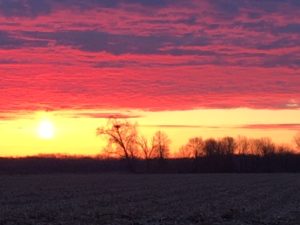 Dimming my headlights, I turn onto the gravel lane and let the car roll slowly downhill in the direction of the Crawfish River. Ostensibly, I am here to count sandhill cranes, but the first order of pre-dawn business is to look – and listen – for snipe.
Dimming my headlights, I turn onto the gravel lane and let the car roll slowly downhill in the direction of the Crawfish River. Ostensibly, I am here to count sandhill cranes, but the first order of pre-dawn business is to look – and listen – for snipe.
I lower my window, turn off the car and close my eyes. And there it is: an eerie whir that rises and fades, rises and fades as air rushes over the fanned tail feathers of a Wilson’s snipe in territorial display. Through my binoculars I search the twilit sky and finally make out the ghostly form of the foot-long shorebird in its quick, stuttering flight. Continue reading
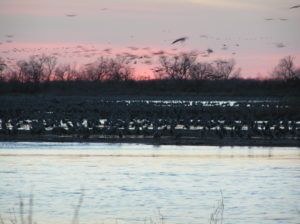
A few days ago I drove west, as I do every spring, to join thousands of people who converge annually on the Platte River and the Rainwater Basin wetlands of south-central Nebraska. Nearly everybody who comes here comes to see some of the millions of migrating birds that congregate in this narrow stretch of the Central Flyway in March: sandhill cranes, ducks, geese, and more.
Some of us are also here to see people.
“Chk, chk.” The voice comes from a nearly leafless tree in the soggy floodplain of the Baraboo River. I look up at two rusty blackbirds – and now a third flies in. They confer briefly – perhaps about me – and drop to the ground, out of sight. The blackbirds, migrating from their breeding grounds in Canada, are heading south, maybe just to Illinois, but possibly as far as the Gulf of Mexico.
It’s October 24, 2016. One hundred fifty-nine years ago today, John Muir, having just walked “joyful and free” from Indiana to the Gulf of Mexico, fell ill with malaria. His sickness and long recuperation interrupted his plans to travel onward to South America. More importantly, they almost certainly changed the course of conservation history in the United States by sending the young naturalist on a different path. Continue reading